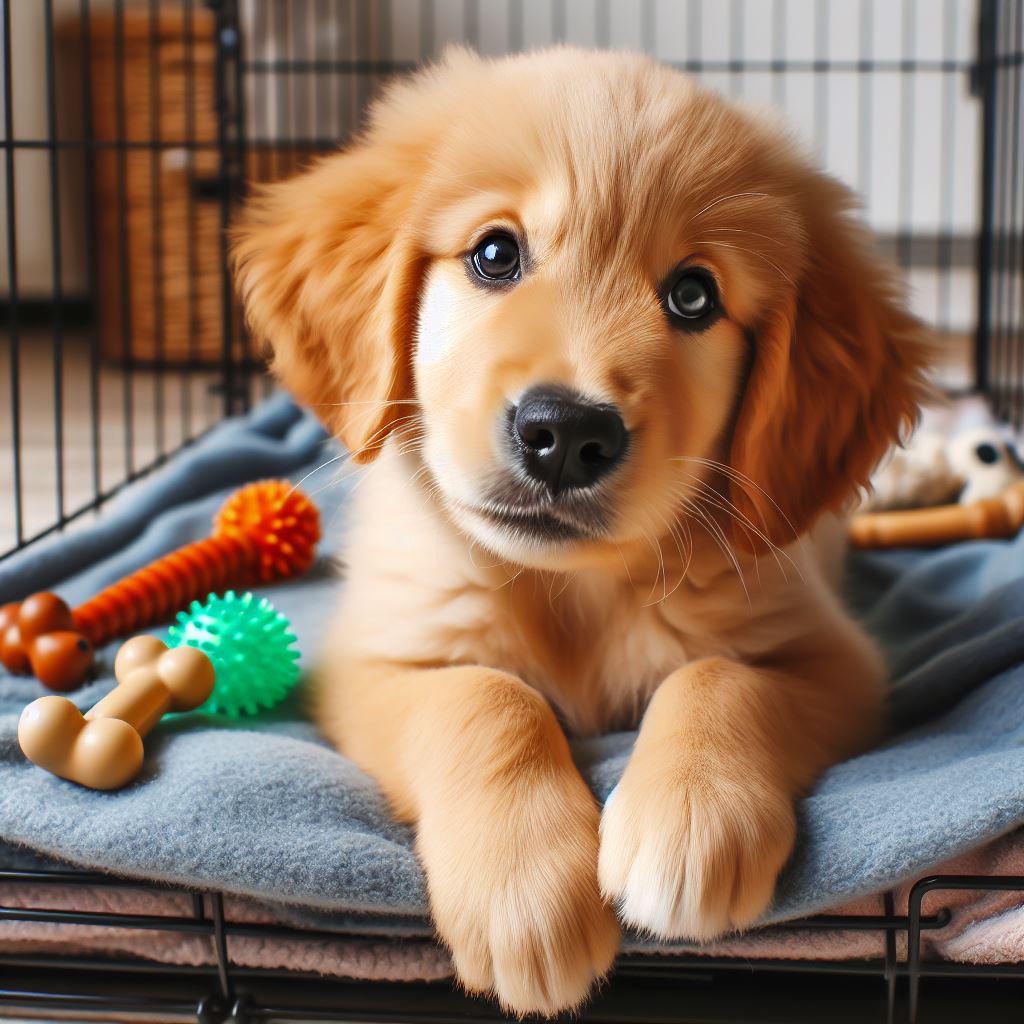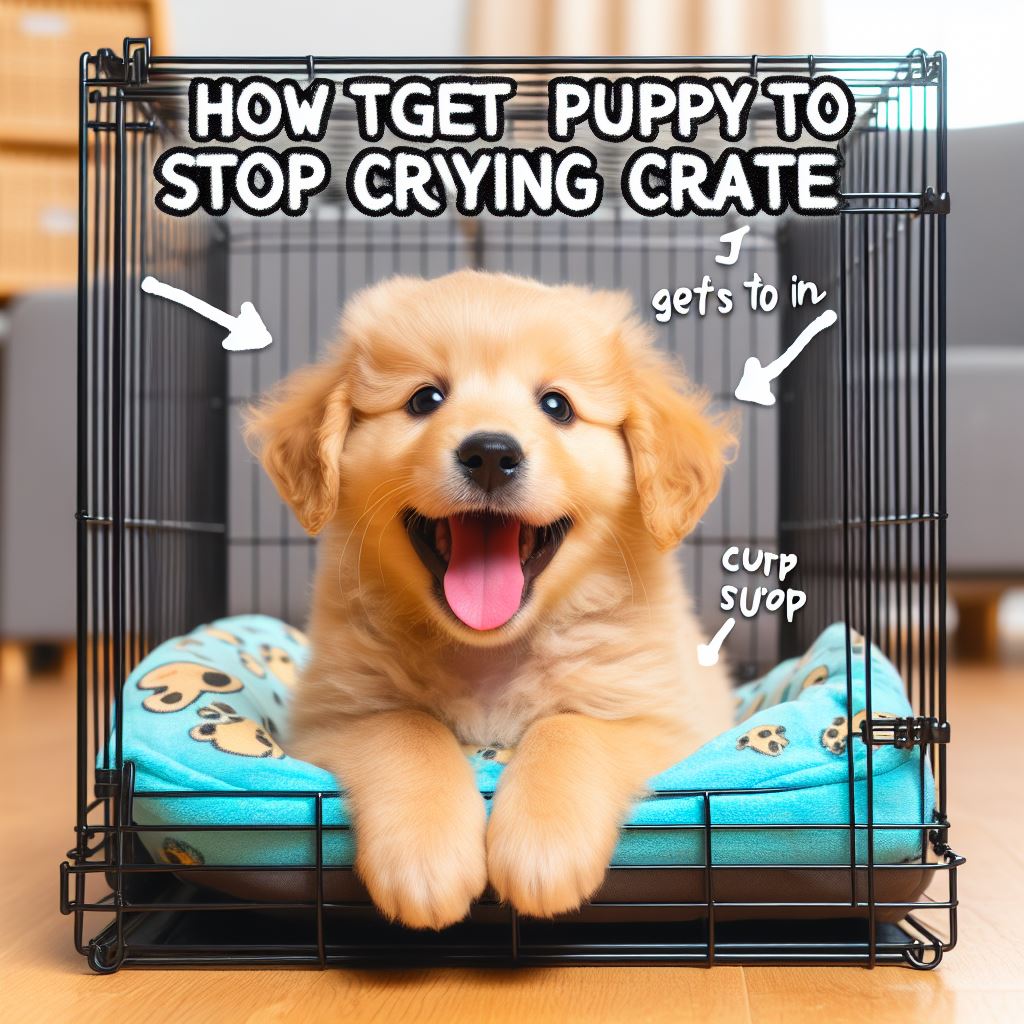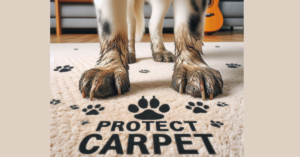Introducing the issue of puppy crate crying
Welcoming a new furry member into your family brings joy, laughter, and, of course, a few challenges. One of the most common hurdles for puppy parents is dealing with the heart-wrenching cries that emanate from the crate. As adorable as those pleading whimpers may sound, they can quickly turn into a source of frustration and concern for both you and your pup. However, fret not! With patience, understanding, and effective techniques on how to get puppy to stop crying in crate, you can help your puppy adjust to their crate peacefully and happily.
In this comprehensive guide, we’ll delve into the reasons behind your puppy’s cries, explore strategies to ease their crate anxiety, and provide you with practical tips to ensure that crate time becomes a positive experience for your furry friend. Whether you’re a first-time puppy parent or looking to refine your crate training skills, this post will equip you with the knowledge and tools necessary to silence those cries and foster a sense of security and comfort for your beloved companion.
Understanding the cause:
Understanding the root cause behind a puppy’s cries in a crate is the crucial first step towards addressing this behavior effectively. Various factors could contribute to your puppy’s distress. This could be ranging from separation anxiety and fear of isolation. To discomfort or a need for attention. Puppies, like human infants, rely heavily on their instincts and are sensitive to changes in their environment. Being separated from their littermates and familiar surroundings can trigger feelings of insecurity and loneliness. This can prompt them to vocalize their distress. Additionally, if the crate is associated solely with confinement or negative experiences, your puppy may resist being confined to it. This can lead to vocal protests. By recognizing and acknowledging these underlying reasons, you can tailor your approach to crate training and implement strategies that address your puppy’s specific needs. This offers a sense of safety and security within their crate.
Establishing a routine:
Establishing a consistent routine is paramount in addressing and mitigating puppy crying while in a crate. Especially when learning how to get puppy to stop crying in crate. By creating a structured schedule that incorporates regular meal times, bathroom breaks, exercise sessions, and crate training sessions, you can help your puppy feel more secure and confident in their crate. Start by gradually acclimating your puppy to their crate during short periods throughout the day, gradually increasing the duration as they become more comfortable. Incorporating positive reinforcement techniques, such as praise, treats, and favorite toys, can further reinforce positive associations with the crate. Additionally, ensure that your puppy’s crate is comfortable and inviting, with soft bedding and appropriate ventilation. Consistency is key; stick to your routine and avoid reinforcing crying behavior by only responding to your puppy’s needs when they are calm and quiet. With patience, persistence, and a well-established routine, you can help your puppy feel at ease in their crate and reduce or eliminate crying altogether.
Crate training tips:
- Gradual Introduction: Introduce your puppy to the crate gradually, making it a positive and comfortable space. Start by leaving the crate door open and allowing your puppy to explore it freely. Encourage them to enter the crate by placing treats and toys inside, creating a positive association.
- Short Incremental Sessions: Begin crate training with short, incremental sessions, gradually increasing the duration over time. Start with just a few minutes at a time and gradually extend the duration as your puppy becomes more accustomed to being in the crate. This helps prevent overwhelming your puppy and reduces the likelihood of crying.
- Positive Reinforcement: Use positive reinforcement techniques to reward calm and quiet behavior in the crate. Offer praise, treats, or favorite toys when your puppy enters the crate willingly and remains calm. This reinforces the desired behavior and helps your puppy associate the crate with positive experiences.
- Ignore Crying: Resist the urge to respond to your puppy’s cries immediately. While it may be difficult, responding to crying can inadvertently reinforce the behavior by giving your puppy attention or letting them out of the crate. Instead, wait for a break in the crying before providing attention or letting them out. Reinforcing the idea that quiet behavior is rewarded.
- Create a Comfortable Environment: Ensure that your puppy’s crate is comfortable and inviting. Provide soft bedding, appropriate ventilation, and ensure the crate is located in a quiet, low-traffic area of your home. Adding familiar scents, such as a blanket or toy from their littermates, can also help your puppy feel more at ease in the crate.
Recommended products 5 best Dog Crates
Comforting methods:
White Noise or Background Music: Playing calming white noise or gentle background music can help drown out external noises and create a soothing environment for your puppy. Choose soft, calming sounds that mimic the gentle hum of a mother’s heartbeat or ambient nature sounds. This can help alleviate your puppy’s anxiety and promote relaxation while in the crate.
Warmth and Comfort Items: Adding warmth and comfort items to your puppy’s crate can help them feel secure and cozy. Consider placing a microwavable heating pad or a warm water bottle wrapped in a towel in the crate to provide comforting warmth. Additionally, include soft blankets, plush toys, or an item with your scent, such as a piece of clothing. This provides reassurance and familiarity for your puppy.
Calming Treats or Chews: Offering calming treats or chews can help distract your puppy and promote relaxation while in the crate. Look for treats specifically designed to reduce anxiety or promote calmness, such as ones containing ingredients like chamomile or lavender. Alternatively, provide safe and durable chew toys, such as stuffed Kongs or durable chew bones, to keep your puppy occupied and mentally stimulated while in the crate.

Addressing separation anxiety:
Addressing separation anxiety is crucial when dealing with a puppy’s crying in a crate. Separation anxiety can intensify a puppy’s distress when left alone, leading to excessive crying, whining, and even destructive behavior. To tackle this issue, gradually accustom your puppy to periods of separation by practicing short absences and gradually increasing the duration over time. Implement a consistent departure routine to help your puppy anticipate your absence without triggering anxiety. Additionally, provide plenty of mental and physical stimulation before crating your puppy to help alleviate pent-up energy and reduce anxiety. Incorporate calming techniques, such as providing comforting items like blankets or toys with your scent. This can offer reassurance and comfort to your puppy while in the crate. Consistency, patience, and positive reinforcement are key in addressing separation anxiety and helping your puppy feel more secure and relaxed in their crate.
Final Thoughts:
Addressing your puppy’s crying in a crate requires patience, understanding, and a multifaceted approach tailored to your puppy’s individual needs. By understanding the underlying causes of the crying, establishing a consistent routine, and implementing comforting methods, you can help your puppy feel more secure and relaxed in their crate. Gradual introduction, positive reinforcement, and the creation of a comfortable environment are essential components of successful crate training. Additionally, addressing separation anxiety with gradual desensitization techniques can further alleviate your puppy’s distress. Remember that crate training takes time and consistency, and setbacks may occur along the way. Stay patient, remain consistent, and celebrate small victories. Work towards a harmonious and peaceful crate experience for both you and your beloved puppy. With dedication and perseverance, you’ll soon find that those tearful cries are replaced with contented sighs as your puppy learns to see their crate as a safe and comforting retreat.




